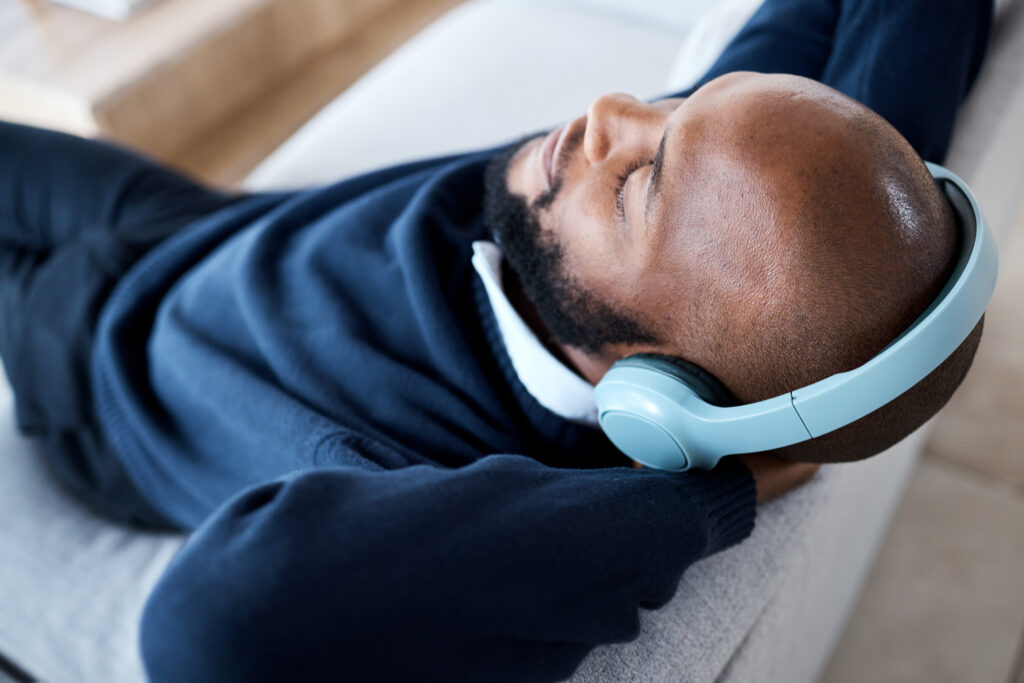
Integrated sensory modulation and navigating the 8 Senses is an innovative approach to stress management, particularly tailored for first responders. This article explores the intricate relationship between sensory processing and stress, delving into the eight senses that shape our experiences. With insights from Bonnie Eckman, a leader in sensory-based stress relief and the Sensory Specialist at After Action, a mental health and addiction treatment program for First Responders in Los Angeles, CA, this article presents practical strategies and techniques for managing stress through sensory awareness. It also discusses the implementation of these methods within first responder agencies, highlighting the challenges, successes, and future directions of sensory integration in stress management.

When we think of our senses, the traditional five come to mind: sight, hearing, taste, smell, and touch. However, there are three additional senses that play a crucial role in how we interact with our environment and manage stress. These are the proprioceptive, vestibular, and interoceptive senses. The proprioceptive sense relates to body awareness and movement, while the vestibular sense is responsible for balance and spatial orientation. The interoceptive sense gives us an internal read on physiological conditions, such as hunger, thirst, and heart rate.
The integration of these eight senses is fundamental to our ability to process sensory information and respond to stress effectively. By understanding and managing sensory input, individuals, particularly first responders, can better navigate stressful situations.

The intricate relationship between sensory processing and stress is pivotal in understanding how first responders react to crisis situations. Sensory Processing Disorder (SPD) can exacerbate stress, particularly when individuals are exposed to environments that overload their sensory systems. This heightened sensitivity can lead to increased anxiety and stress in specific environments or situations.
The balance between sensory input and the body’s ability to process it is crucial for maintaining emotional and physiological equilibrium.
Understanding these dynamics is essential for developing effective stress management strategies for first responders, who often operate in high-stress, sensory-challenging environments.

In the throes of a crisis, first responders are subjected to an onslaught of sensory stimuli. The intensity and nature of these stimuli can profoundly affect their stress levels and overall well-being.
The cumulative effect of these sensory challenges can lead to a state of hyperarousal or numbness, both of which are detrimental to a first responder’s capacity to function effectively.
The experiences of a first responder may change their ability to recover as quickly as before. Vicariously living through repeated traumatic events inevitably takes a toll on their sensory processing, which can have lasting effects on their mental health and resilience.

Bonnie Eckman is a renowned expert in the field of sensory-based stress management, particularly within high-stakes professions such as first responders. With a background in occupational therapy and a focus on sensory integration, Eckman has dedicated her career to understanding how sensory processing affects emotional and physiological responses to stress.
Her innovative techniques have been instrumental in developing training programs that help individuals manage stress through sensory awareness and regulation. Eckman’s work emphasizes the importance of recognizing and addressing the unique sensory needs of each person, especially those in demanding roles like firefighting, law enforcement, and emergency medical services.
Eckman’s approach is grounded in the belief that effective stress management is about more than just coping; it’s about thriving in the face of adversity.
Eckman’s contributions to the field include numerous workshops, publications, and collaborative efforts with first responder agencies to implement sensory-based strategies. Her expertise is a valuable asset to the After Action First Responder program at AM Healthcare and individuals looking to enhance their well-being and performance through a deeper understanding of sensory processing.

At the heart of sensory-based stress relief is the understanding that our senses are directly linked to how we experience and manage stress. Bonnie Eckman emphasizes the importance of recognizing and regulating sensory input to maintain mental and emotional balance, especially in high-pressure environments like those faced by first responders.
By focusing on these core principles, individuals can develop a personalized approach to stress management that aligns with their unique sensory profiles.
Eckman’s methodology is grounded in the idea that by taking control of our sensory experiences, we can influence our stress levels. This is particularly relevant for first responders, who often encounter overwhelming sensory stimuli. By applying these principles, they can enhance their ability to cope with the demands of their critical roles.

Bonnie Eckman emphasizes the importance of identifying personal sensory triggers to effectively manage stress. By recognizing which senses are overstimulated and which are underutilized, first responders can create a balanced sensory diet that promotes calmness and focus.
By tailoring sensory experiences, individuals can swiftly shift from a state of high alert to one of relaxation, enhancing their ability to cope with stress in the long term.
It’s crucial for first responders to have quick access to sensory tools that align with their personal preferences and the demands of their environment. This approach not only aids in immediate stress relief but also contributes to building resilience against future stressors.

First responders encounter a unique set of sensory stimuli that can significantly impact their stress levels. Understanding and addressing individual sensory profiles is crucial for effective stress management. Each person’s sensory processing is distinct, and what may be soothing for one individual could be overwhelming for another.
By carefully assessing and understanding these profiles, first responders can be equipped with personalized strategies that enhance their ability to manage stress in high-pressure situations.
Implementing sensory-based strategies requires a thoughtful approach that considers the intensity, type, and timing of sensory input. Balancing these factors can help mitigate the adverse effects of sensory overload and improve overall stress resilience.

The integration of sensory tools into stress management protocols offers a tangible way for first responders to mitigate stress responses in real-time. Sensory tools can range from simple tactile objects to complex sensory environments, designed to address specific sensory needs.
By proactively incorporating these tools into their routines, first responders can create a personalized toolkit that empowers them to maintain composure and effectiveness in the face of stress.
The selection of appropriate sensory tools is crucial and should be informed by an understanding of an individual’s sensory profile. For instance, the Sensory Room at After Action includes a variety of treatment options that cater to different sensory preferences, underscoring the importance of a tailored approach.

First responders can significantly enhance their resilience to stress by developing a heightened awareness of their sensory environment. Sensory awareness training is designed to help individuals recognize and regulate their sensory input, which can be particularly overwhelming in emergency situations.
By consistently applying these strategies, first responders can create a buffer against stress, allowing them to respond more effectively to emergencies without becoming overwhelmed.
The goal of sensory awareness training is not only to manage stress in the moment but also to build long-term coping mechanisms. These skills are essential for maintaining mental health and preventing burnout in high-stakes environments.
Developing sensory-based programs for first responders involves a multifaceted approach that must be carefully tailored to meet the unique demands of emergency service environments. Key challenges include securing funding, ensuring program scalability, and achieving buy-in from leadership and frontline personnel.
It is imperative to consider the diverse sensory profiles of first responders and how these can be accommodated within the program’s design to ensure maximum effectiveness and inclusivity.
Another significant consideration is the integration of the program into existing training and support systems. This requires a thoughtful alignment with current protocols and the flexibility to evolve as new insights and technologies emerge. The ‘Linked’ program, for example, fosters positive interactions between first responders and the community, including those with special needs, which can also serve as a stress management tool.
The implementation of sensory-based programs has shown promising results in various first responder agencies. One notable example is the Empowering Vulnerable Communities initiative, which focused on disaster preparedness and response. This program emphasized the importance of training first responders in communication techniques sensitive to sensory issues, ensuring they could effectively manage stress in themselves and those they assist during emergencies.
The success of these programs highlights the potential for sensory-based approaches to significantly improve the well-being of first responders and the communities they serve. By tailoring strategies to the unique sensory profiles of individuals, agencies can foster a more supportive and effective environment for managing stress in high-pressure situations.
To gauge the success of sensory-based interventions in first responder agencies, a multi-faceted evaluation approach is essential. Quantitative metrics, such as reduced incident rates of stress-related illnesses and improved response times, offer tangible evidence of program benefits. Qualitative feedback from participants also provides invaluable insights into the interventions’ impact on individual well-being.
The true measure of these programs lies in their ability to enhance the overall quality of life for first responders, both on and off duty.
A balanced assessment combines both statistical data and personal accounts to paint a comprehensive picture of effectiveness. Below is an example of how quantitative data might be structured:
| Metric | Pre-Intervention | Post-Intervention | % Change |
| Stress-Related Sick Leave | 120 days | 80 days | -33.33% |
| Average Response Time | 9 minutes | 7 minutes | -22.22% |
Continual monitoring and iterative improvements ensure that sensory-based programs remain responsive to the evolving needs of first responders.

Recent studies have begun to shed light on the intricate relationship between sensory processing and stress management. Research indicates that individuals with heightened sensory processing sensitivity (SPS) may experience more intense reactions to stimuli, which can have both positive and negative implications for stress levels. This sensitivity can mean that first responders with high SPS could be more susceptible to stress in high-stimulus environments.
Emerging data suggests that understanding and managing sensory processing can play a crucial role in stress reduction. For instance, interventions that modulate sensory input have shown promise in helping individuals better cope with stress. Tailoring these interventions to the unique sensory profiles of first responders could enhance their effectiveness.
The integration of sensory processing research into stress management protocols offers a new avenue for supporting the well-being of first responders.
Further exploration into this field is essential for developing comprehensive strategies that address the sensory dimensions of stress. As research progresses, it is likely that sensory-based interventions will become a staple in stress management programs for first responders.

The integration of technology into sensory environments has opened up new avenues for stress management, particularly for first responders. Innovative digital tools are being designed to create immersive experiences that can significantly reduce stress levels. These tools range from virtual reality simulations that help desensitize individuals to stressful scenarios, to apps that provide guided relaxation techniques tailored to sensory preferences.
Each of these technologies offers a unique approach to managing stress by enhancing the sensory environment. For instance, VR training can simulate high-pressure situations in a controlled setting, allowing first responders to practice coping strategies. Sensory modulation apps can guide users through relaxation exercises that target specific senses, such as auditory or tactile. Biofeedback devices monitor physiological responses and teach users how to consciously regulate their stress reactions.
The potential of these technologies lies in their ability to be personalized and adapted to the needs of each individual, providing a powerful tool for stress management that can be seamlessly integrated into daily routines.
The integration of sensory-informed practices into stress management protocols for first responders is not just a matter of individual well-being; it has significant policy implications. Advocacy for sensory-informed practices is crucial in shaping public health policies that recognize the unique needs of first responders.
The adoption of sensory-informed practices requires a collaborative effort between policymakers, mental health professionals, and first responder communities to ensure that these practices are not only understood but also effectively implemented.
Ensuring that first responders have access to sensory-based stress management tools can lead to a reduction in long-term health costs and an increase in the overall effectiveness of emergency services. It is imperative that ongoing dialogue and research inform the development of policies that support the mental health and resilience of those on the front lines.
In conclusion, Bonnie Eckman’s insights into the 8 senses provide a comprehensive framework for first responders to manage stress effectively. By understanding and navigating these sensory experiences, individuals in high-stress professions can develop strategies to maintain their mental and physical well-being. The application of Eckman’s approach can lead to improved decision-making, resilience, and overall quality of life for those who are often the first to face critical situations. It is our hope that this article serves as a valuable guide for first responders seeking to harness their sensory awareness in the pursuit of stress management and personal growth.
The 8 senses include the traditional five senses – sight, sound, touch, taste, and smell – as well as three additional ones: vestibular (sense of balance and movement), proprioception (sense of body position and movement), and interoception (internal sense of bodily functions).
First responders often encounter intense sensory input during emergencies, which can overwhelm their sensory processing and contribute to heightened stress levels. Proper management of sensory input is crucial for maintaining mental clarity and reducing stress.
Bonnie Eckman is an expert in sensory-based stress management. Her approach focuses on understanding individual sensory profiles and using specific techniques to balance sensory input, which can help mitigate stress and improve overall well-being.
Some techniques include mindfulness exercises that focus on sensory experiences, using sensory tools like weighted blankets or noise-canceling headphones, and engaging in activities that provide positive sensory input to counteract stress.
Challenges can include lack of awareness about sensory processing, budget constraints, resistance to change from traditional stress management methods, and the need for specialized training.
Effectiveness can be measured through quantitative data like reduced absenteeism and improved performance, as well as qualitative feedback from participants regarding their stress levels and coping mechanisms.
